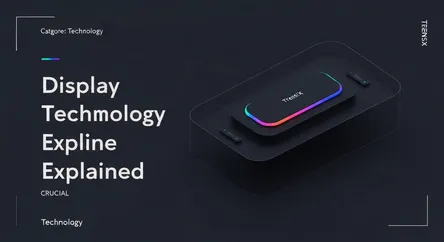Technology
Display Technology Explained

Explore the science behind our screens. From OLED and QLED to MicroLED, learn what drives the latest innovations in display technology and gadgets.
What is it?
Display technology refers to the various methods and sciences used to create visual images on screens. It's the engine behind your smartphone, TV, and laptop. Major types include Liquid Crystal Displays (LCD); Organic Light-Emitting Diodes (OLED), where each pixel creates its own light for perfect blacks and vibrant colors; and Quantum Dot LEDs (QLED), an LCD variation using quantum dots for enhanced color. The latest frontier is MicroLED, which promises the benefits of OLED without drawbacks like burn-in.
Why is it trending?
The race for the perfect screen is relentless. Consumers demand brighter, thinner, more energy-efficient, and higher-resolution displays for an increasingly visual world. Innovations like foldable phones, transparent screens, and high-refresh-rate gaming monitors are pushing boundaries. The intense competition between technologies like OLED and QLED in the premium TV market, along with the massive potential of MicroLED to revolutionize all screen sizes, keeps display technology at the forefront of gadget news.
How does it affect people?
Advances in display technology directly impact our daily lives by enhancing our primary interface with the digital world. Better screens make entertainment more immersive and work more productive. They enable new device form factors, such as flexible and foldable gadgets that change how we interact with technology. Furthermore, improvements in efficiency lead to longer battery life for portable devices, while features that reduce blue light and flicker can lessen eye strain, improving our well-being.